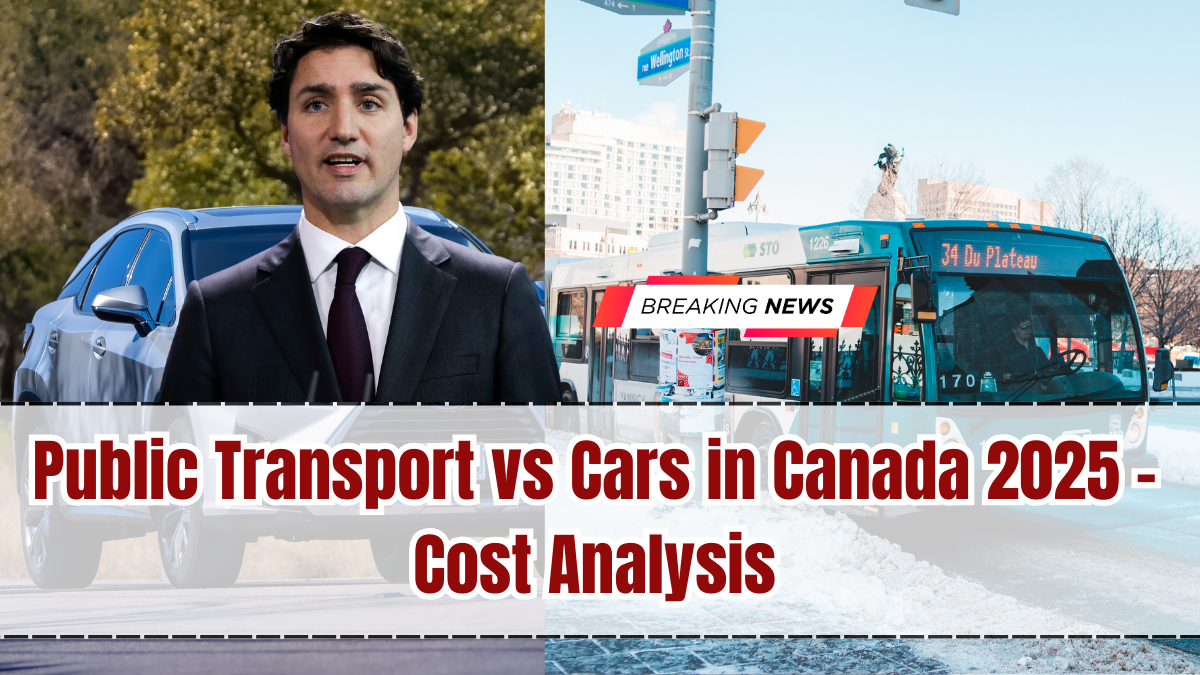Choosing how to get around is one of the most important lifestyle decisions for Canadians. For some, owning a car represents freedom and convenience. For others, public transport provides affordability and sustainability. In 2025, rising fuel prices and urban congestion have reignited the debate over Public Transport vs Cars in Canada 2025.
This comparison goes beyond simple costs. It involves examining convenience, environmental impact, and how each option fits into modern Canadian life. As urban populations grow and cities invest in transit infrastructure, the balance between cars and public transportation is shifting.

The Costs of Car Ownership in 2025
Owning a car in Canada is expensive, and costs continue to rise in 2025. Beyond the initial purchase, drivers face insurance, maintenance, fuel, parking, and loan repayments. On average, owning a compact car can cost between $8,000 and $12,000 annually, depending on location and usage.
Fuel prices are one of the biggest challenges. With petrol prices reaching highs in 2025, filling up even small cars puts pressure on household budgets. Insurance premiums have also increased, particularly in provinces like Ontario and British Columbia. For families, car ownership often means balancing these recurring costs against convenience.
The Affordability of Public Transport
By contrast, public transport is considerably cheaper. Monthly passes in most Canadian cities range from $100 to $150, translating to annual costs of under $2,000. For students and seniors, discounts make it even more accessible.
Cities like Toronto, Vancouver, and Montreal have expanded transit networks, improving service reliability. Investments in electric buses and light rail systems in 2025 have further enhanced sustainability while keeping fares stable. For urban residents, this makes public transport the clear winner in affordability.
Convenience and Flexibility
Cost is only part of the story. Many Canadians still choose cars for the flexibility they provide. A car allows spontaneous trips, long-distance travel, and convenience for families with children or those living in suburban or rural areas. In regions with limited transit coverage, car ownership is almost a necessity.
However, in dense urban centers, public transport often proves more convenient. Commuters avoid traffic jams, parking headaches, and unpredictable fuel costs. With apps providing real-time schedules, public transit in 2025 is more reliable and user-friendly than ever before.
Environmental Considerations
Environmental concerns are central to the debate of Public Transport vs Cars in Canada 2025. Personal vehicles, especially older and less efficient ones, contribute heavily to greenhouse gas emissions. Rising fuel consumption also impacts Canada’s climate goals.
Public transportation, by contrast, is much more sustainable. The shift toward electric buses and green transit options has significantly reduced emissions in Canadian cities. Choosing public transport not only saves money but also contributes to a cleaner environment.
Lifestyle and Social Factors
For many Canadians, transportation choices also reflect lifestyle. Car ownership is often associated with independence and status, while public transport emphasizes community living and urban efficiency. Families with young children may find cars more practical, while young professionals and students often prefer the affordability of transit.
Cultural attitudes also play a role. In rural areas, cars remain essential for mobility, while in large cities, public transport is increasingly seen as the smarter and more responsible choice. These differences show that there is no universal answer, but rather a balance shaped by individual needs.
The Future of Mobility in Canada
Looking ahead, the competition between public transport and cars will intensify. Governments are investing billions into expanding subway lines, bus rapid transit, and electric vehicle infrastructure. Autonomous shuttles and shared mobility services are also expected to become part of the landscape.
For drivers, electric and hybrid vehicles offer a middle ground, providing personal convenience with reduced environmental impact. For public transport, ongoing improvements in service and accessibility will continue to attract more users. The outcome of Public Transport vs Cars in Canada 2025 may ultimately be a hybrid model, where both options coexist depending on personal circumstances.
FAQs
Which is cheaper in Canada, cars or public transport in 2025?
Public transport is far cheaper, averaging under $2,000 annually, compared to car ownership costs that can exceed $10,000 per year.
Is public transport reliable in Canadian cities?
Yes, major cities like Toronto, Montreal, and Vancouver have improved reliability with expanded networks and real-time service updates.
Do rising fuel prices affect transportation choices?
Yes, high petrol prices in 2025 are pushing many Canadians to reconsider car ownership and shift toward public transit.
Which option is better for the environment?
Public transport is significantly better, as buses, trains, and subways reduce emissions compared to individual car use.
Will cars still dominate in rural Canada?
Yes, in rural and suburban areas where public transport is limited, cars remain essential for mobility and independence.
Click here to know more.
